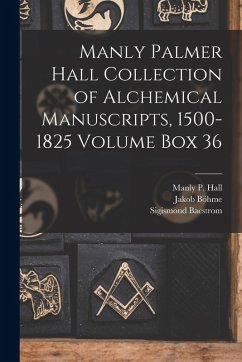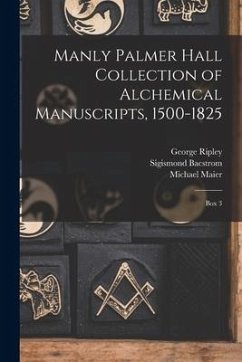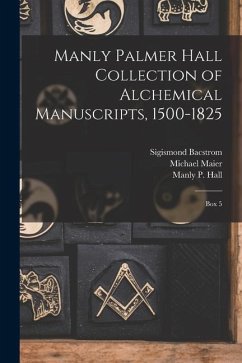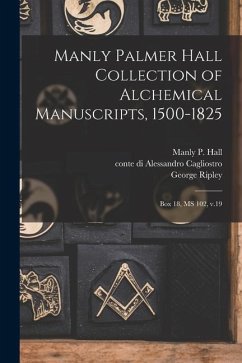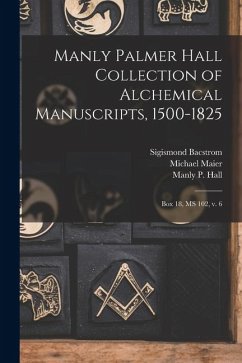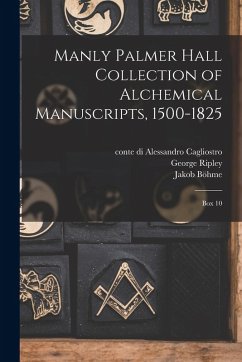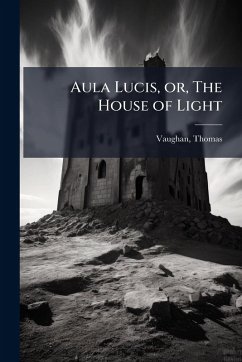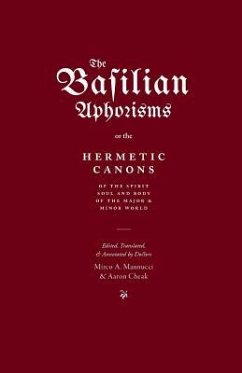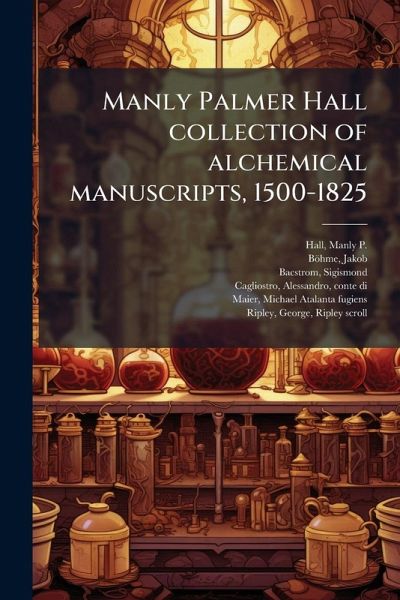
Manly Palmer Hall collection of alchemical manuscripts, 1500-1825
Versandkostenfrei!
Versandfertig in über 4 Wochen
15,99 €
inkl. MwSt.

PAYBACK Punkte
8 °P sammeln!
This collection, titled "Manly Palmer Hall collection of alchemical manuscripts, 1500-1825: Box 34 MS. 209," offers a rare glimpse into the world of alchemical thought and practice from the 16th to the 18th centuries. Featuring works associated with influential figures such as Jakob Böhme, Sigismond Bacstrom, Alessandro Cagliostro, Michael Maier (including "Atalanta fugiens"), and George Ripley (specifically the "Ripley Scroll"), the manuscripts cover a range of esoteric and mystical subjects. Compiled by Manly P. Hall, a renowned scholar of esotericism, this collection provides valuable insi...
This collection, titled "Manly Palmer Hall collection of alchemical manuscripts, 1500-1825: Box 34 MS. 209," offers a rare glimpse into the world of alchemical thought and practice from the 16th to the 18th centuries. Featuring works associated with influential figures such as Jakob Böhme, Sigismond Bacstrom, Alessandro Cagliostro, Michael Maier (including "Atalanta fugiens"), and George Ripley (specifically the "Ripley Scroll"), the manuscripts cover a range of esoteric and mystical subjects. Compiled by Manly P. Hall, a renowned scholar of esotericism, this collection provides valuable insights into the historical development of alchemy, its symbolism, and its connection to various spiritual traditions. Researchers and enthusiasts interested in alchemy, Rosicrucianism, and Western esotericism will find this collection to be a rich resource for understanding the intellectual and spiritual currents of the period. This work has been selected by scholars as being culturally important, and is part of the knowledge base of civilization as we know it. This work was reproduced from the original artifact, and remains as true to the original work as possible. Therefore, you will see the original copyright references, library stamps (as most of these works have been housed in our most important libraries around the world), and other notations in the work. This work is in the public domain in the United States of America, and possibly other nations. Within the United States, you may freely copy and distribute this work, as no entity (individual or corporate) has a copyright on the body of the work. As a reproduction of a historical artifact, this work may contain missing or blurred pages, poor pictures, errant marks, etc. Scholars believe, and we concur, that this work is important enough to be preserved, reproduced, and made generally available to the public. We appreciate your support of the preservation process, and thank you for being an important part of keeping this knowledge alive and relevant.



